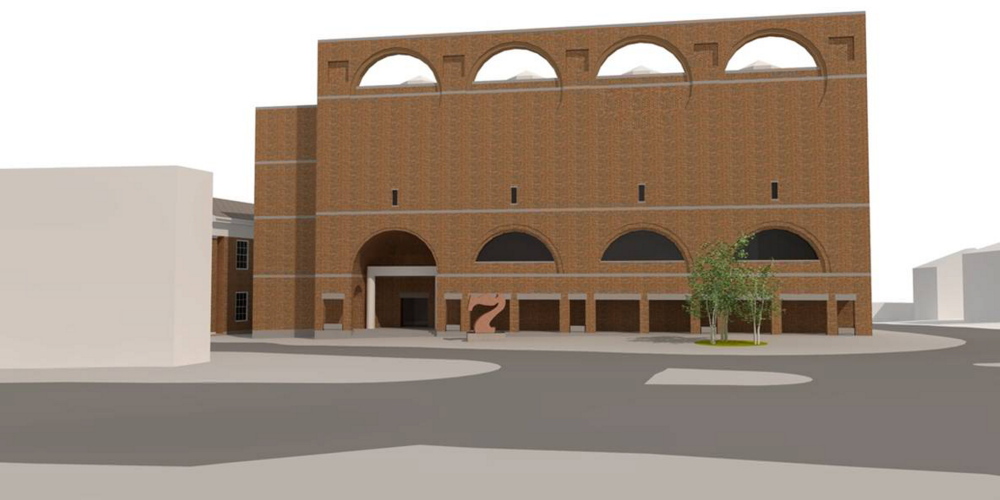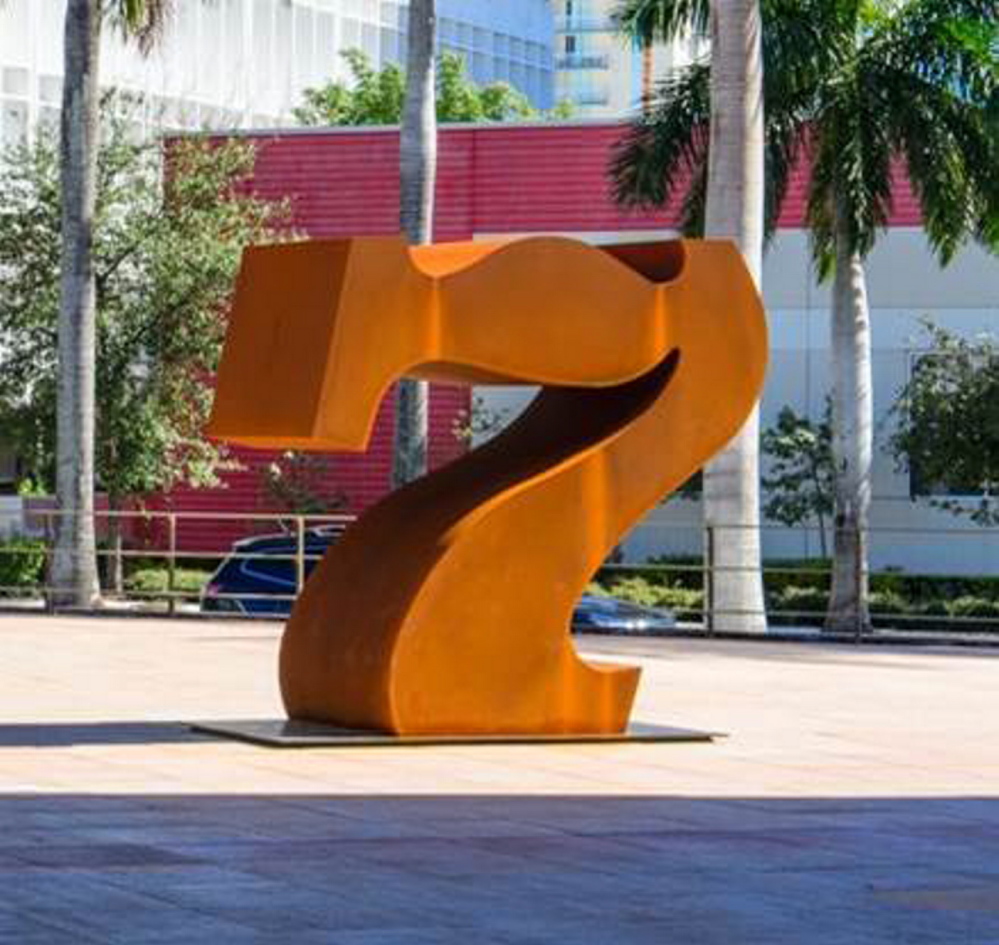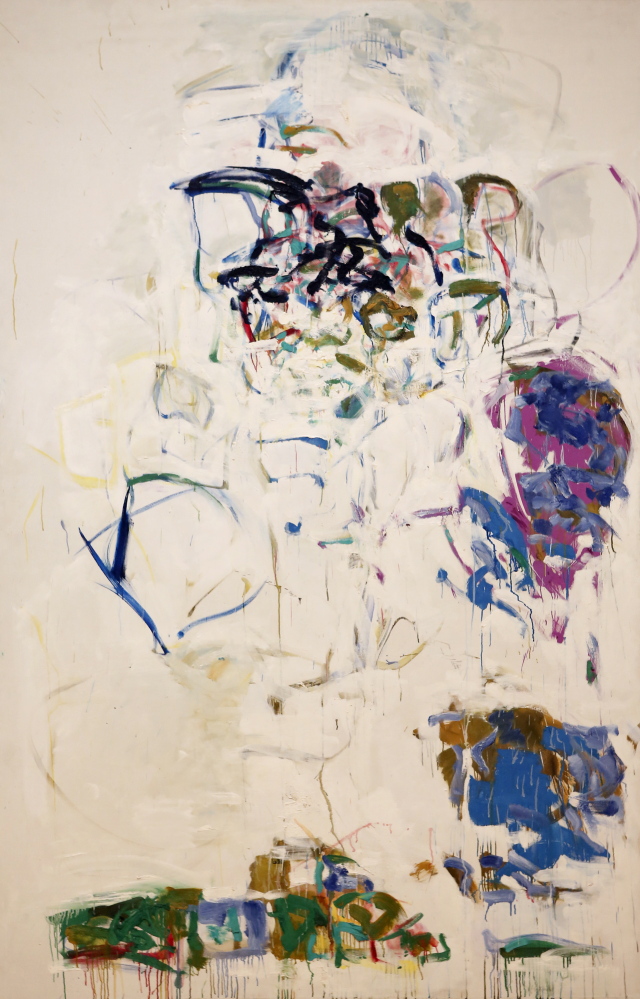Last month, Colby College Museum of Art put on a view a 1968 painting by Joan Mitchell that museum director Sharon Corwin believes is the best example of abstract expressionism in Maine. Next month, the Portland Museum of Art will unveil an 8-foot-tall steel “Seven” sculpture by Robert Indiana, once rejected by the Prince of Monaco, in the pedestrian plaza out front.
The two works share few similarities, but they represent the latest high-profile acquisitions by two leading museums in Maine and highlight the challenges facing curators and museum directors as they shape collections across the state.
In both instances, the museums acquired the art because benefactors took personal interest in bringing it to Maine.
The purchase of the Indiana sculpture was spurred by an anonymous donor, who wanted the museum to make a bold, public statement about contemporary art. The Mitchell painting came to Colby from longtime museum supporters Peter and Paula Lunder, whose gifts have shaped the Colby museum for years.
In Maine and elsewhere, museums depend on the vision and generosity of individual donors to build and enhance their art collections. The cost of art has made it nearly impossible for museums to buy significant works of art or compete at auction, as they once did, so they build relationships with artists, collectors and donors whose goals align with museum strategies.
The recent acquisitions illustrate how those relationships work.
The Portland museum’s board approved the purchase of Indiana’s “Seven” at its September meeting. An anonymous donor promised museum director Mark Bessire the bulk of the money toward the purchase if he raised the rest.
Bessire worked through the summer to make it happen.
Indiana, 86, lives on Vinalhaven Island off Rockland. He made a monumental series of numbers in aluminum, “Numbers One through Zero,” for the Indianapolis Museum of Art in 1980. Over the years, he expanded the series to steel.
A 6-foot series was exhibited along New York’s Park Avenue as part of “Art in the Park” in 2003.
Bessire saw that display while he was directing the Institute for Contemporary Art at Maine College of Art in Portland. It impressed him, and he began thinking how the numbers could work in Maine.
A decade later, as director of the Portland museum, Bessire was in a position to move quickly when he learned one set of “Numbers” was being broken up.
“Seven” will announce the museum’s address at 7 Congress Square.
“With all the activity on Congress Square, it just seemed like an exciting opportunity for the museum to step up and show how art can change the square,” he said.
Bessire declined to disclose the purchase price but said the museum has raised a total of about $400,000. The campaign is ongoing, and recently added an Indiegogo campaign targeting the museum’s young professional membership group, The Contemporaries. In the spring, Bessire approached a lead donor who “felt strongly we that we need to be vigilant about growing our collection and focus on major, impactful works.” That donor made a commitment “to get us started,” Bessire said.
In a phone interview from his home on Vinalhaven, Indiana called it a “happy situation” that “Seven” has ended up in Maine.
He once offered it to the Prince of Monaco.
“I flew to France and entered Monaco by helicopter and met the prince and his family and presented the number ‘Seven’ sculpture to him personally,” Indiana recalled. “My dealer and I and everybody thought it was a nice thing to have in Monaco, except the prince didn’t find it to his liking and declined to accept it for Monaco. That is the sad history of ‘Seven.’ ”
“Seven” will mark the museum’s presence and honor an artist who has lived year-round in Maine for several decades, said Jessica May, the museum’s chief curator.
“We have for a long time felt strongly that we should have a piece by Indiana that declares this is a place for art,” May said.
The sculpture, which had been on view in Miami through the summer, will come to Maine in a few weeks and be unveiled during First Friday Art Walk on Nov. 7. The museum will place it on a base that’s 22 inches tall, which means the top of the rust-colored sculpture will tower nearly 10 feet above the brick plaza. It will take the place of a kiosk that now announces exhibitions.
Indiana is closely associated with pop art, and is best known for his “LOVE” print, which became a U.S. stamp. He was born in Indiana, made his career in New York and came to Maine to live mostly quietly on Vinalhaven beginning in the 1960s.
Indiana has a long history with the Portland Museum of Art. The museum has 17 Indiana pieces in its collection, mostly prints and paintings. The artist said he was considering a trip to Portland to see “Seven” during its unveiling, but remained non-committal. He’s not been feeling well lately and is busy at home.
“I am working on my autobiography, a rather large project,” he said.
The purchase and the opportunity to display monumental art in a public place “is why we get up in the morning,” May said.
At the core of the museum’s institutional identity are the moments when the Maine art story intersects with a national or international art story. Indiana represents that intersection, she said.
“He’s one of a very small number of international artists who make Maine their full-time home,” May said. “We want to recognize that and honor that.”
Conversely, the abstract expressionist painter Joan Mitchell has no relationship with Maine. The Colby museum acquired a painting this summer to satisfy a collecting goal, said museum director Sharon Corwin.
Mitchell made the painting “Chamrousse” in 1967 or 1968 while living in France. Curator Diana Tuite praised its “pronounced gestural activity,” “vibrant color” and palette that runs from lemon yellow and bud green to purples, blues and ochres.
Corwin said its acquisition is significant because the painting is an excellent example of abstract expressionism. It represents a moment when American art was at the center of artistic expression, and Mitchell was at the apex of her career.
Mitchell, who died in 1992, was a second-generation abstract expressionist and a key member of the American abstract expressionist movement, Corwin said. She was among few female painters who gained acclaim. Earlier this year, an untitled abstract of Mitchell’s dating from 1960 was sold for nearly $12 million at auction, a record price for a female artist.
Abstract expressionism “was such an Americana moment,” Corwin said, “and now we have a major example from one of the most important artists of that movement.”
The painting came to the museum via a familiar route: Benefactors Peter and Paula Lunder purchased it for the museum. Prominent art collectors, the Lunders have given art to Colby for years, including more than 500 pieces of mostly American art, valued at more than $100 million.
The Lunders have roots in Waterville and live part of the year in Scarborough.
Corwin regularly consults with the Lunders about potential purchases. Mitchell has been part of an ongoing discussion.
“They were aware of how important her work is to the history of art and the history of American art,” Corwin said. “They were aware of our inability to tell the full story of American art without a great abstract expressionist painting in the collection.”
When “Chamrousse” came on the market, the Lunders decided it was something Colby should have and bought it from a private dealer.
Corwin did not disclose the purchase price.
It arrived in Waterville in early September, and Corwin put it up right away as part of the inauguration weekend of Colby’s 20th president, David A. Greene.
Send questions/comments to the editors.





